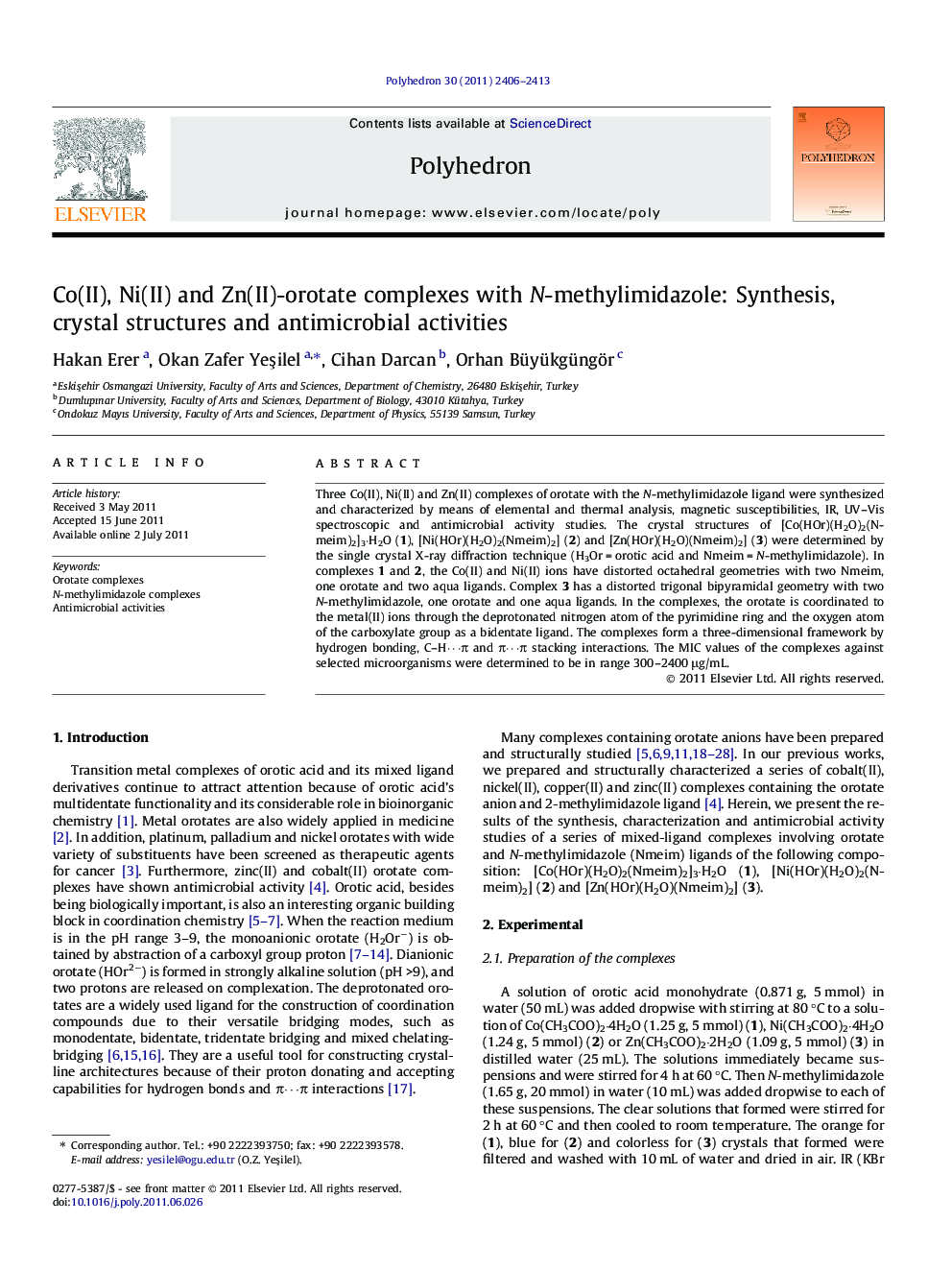| Article ID | Journal | Published Year | Pages | File Type |
|---|---|---|---|---|
| 1337786 | Polyhedron | 2011 | 8 Pages |
Three Co(II), Ni(II) and Zn(II) complexes of orotate with the N-methylimidazole ligand were synthesized and characterized by means of elemental and thermal analysis, magnetic susceptibilities, IR, UV–Vis spectroscopic and antimicrobial activity studies. The crystal structures of [Co(HOr)(H2O)2(Nmeim)2]3·H2O (1), [Ni(HOr)(H2O)2(Nmeim)2] (2) and [Zn(HOr)(H2O)(Nmeim)2] (3) were determined by the single crystal X-ray diffraction technique (H3Or = orotic acid and Nmeim = N-methylimidazole). In complexes 1 and 2, the Co(II) and Ni(II) ions have distorted octahedral geometries with two Nmeim, one orotate and two aqua ligands. Complex 3 has a distorted trigonal bipyramidal geometry with two N -methylimidazole, one orotate and one aqua ligands. In the complexes, the orotate is coordinated to the metal(II) ions through the deprotonated nitrogen atom of the pyrimidine ring and the oxygen atom of the carboxylate group as a bidentate ligand. The complexes form a three-dimensional framework by hydrogen bonding, C–H⋯⋯π and π⋯⋯π stacking interactions. The MIC values of the complexes against selected microorganisms were determined to be in range 300–2400 μg/mL.
Graphical abstractThree Co(II), Ni(II) and Zn(II)-orotate complexes with N -methylimidazole ligand have been synthesized and characterized. The crystal structures of the complexes were determined by single crystal X-ray diffraction studies. In the three complexes, orotate acts as a bidentate ligand. The crystal packing of the complexes are a composite of intermolecular hydrogen bonding and C–H⋯⋯π interactions. Furthermore, in vitro antimicrobial activities of the complexes were tested against selected wild type microorganisms using MIC methods.Figure optionsDownload full-size imageDownload as PowerPoint slideHighlights► Three new Co(II), Ni(II) and Zn(II)-orotate complexes with the N-methylimidazole ligand have been synthesized. ► The complexes were structurally characterized. ► The crystal packing in the complexes is achieved via hydrogen bonds and C–H⋯⋯π interactions. ► In vitro antimicrobial activities of the complexes were tested against selected wild type microorganisms.
